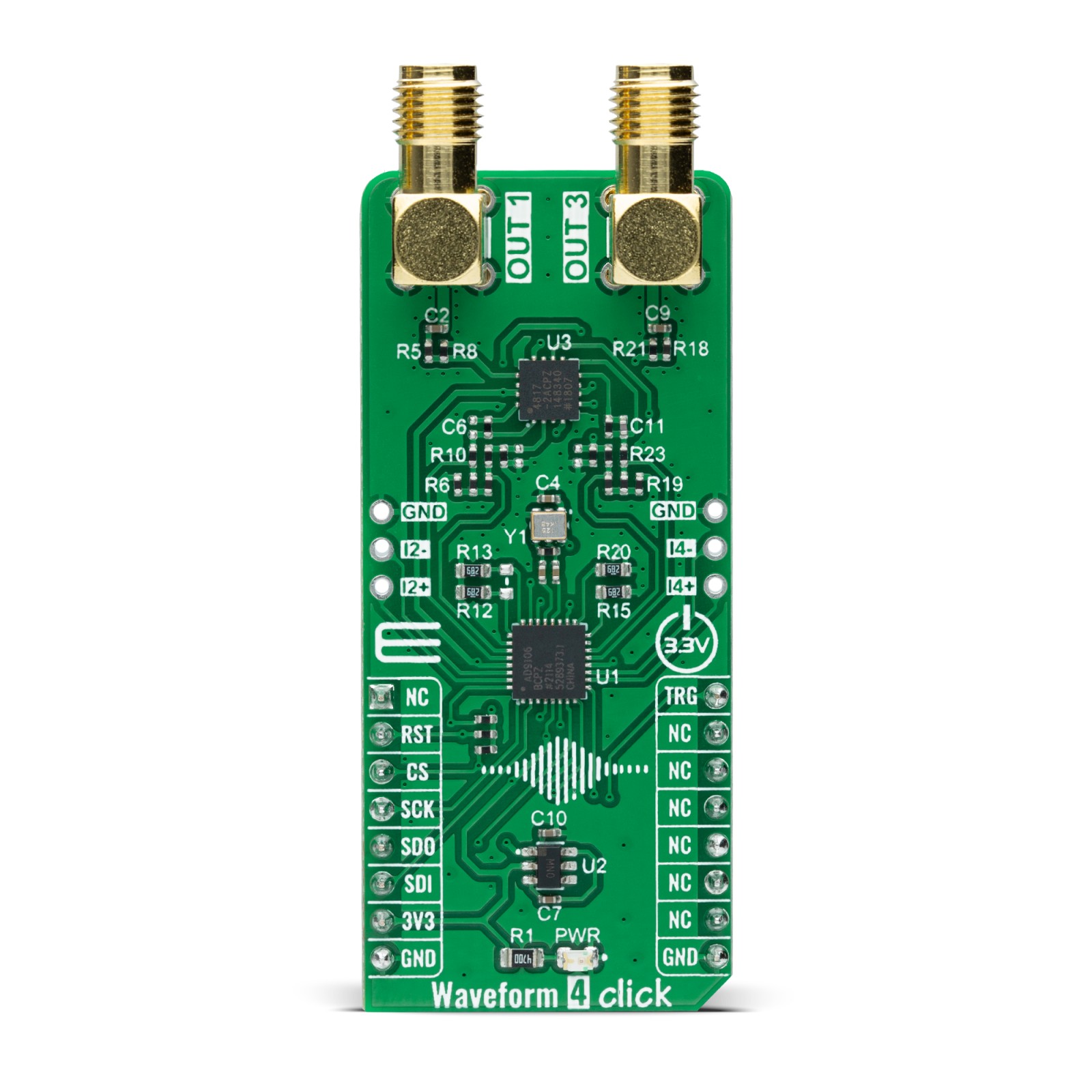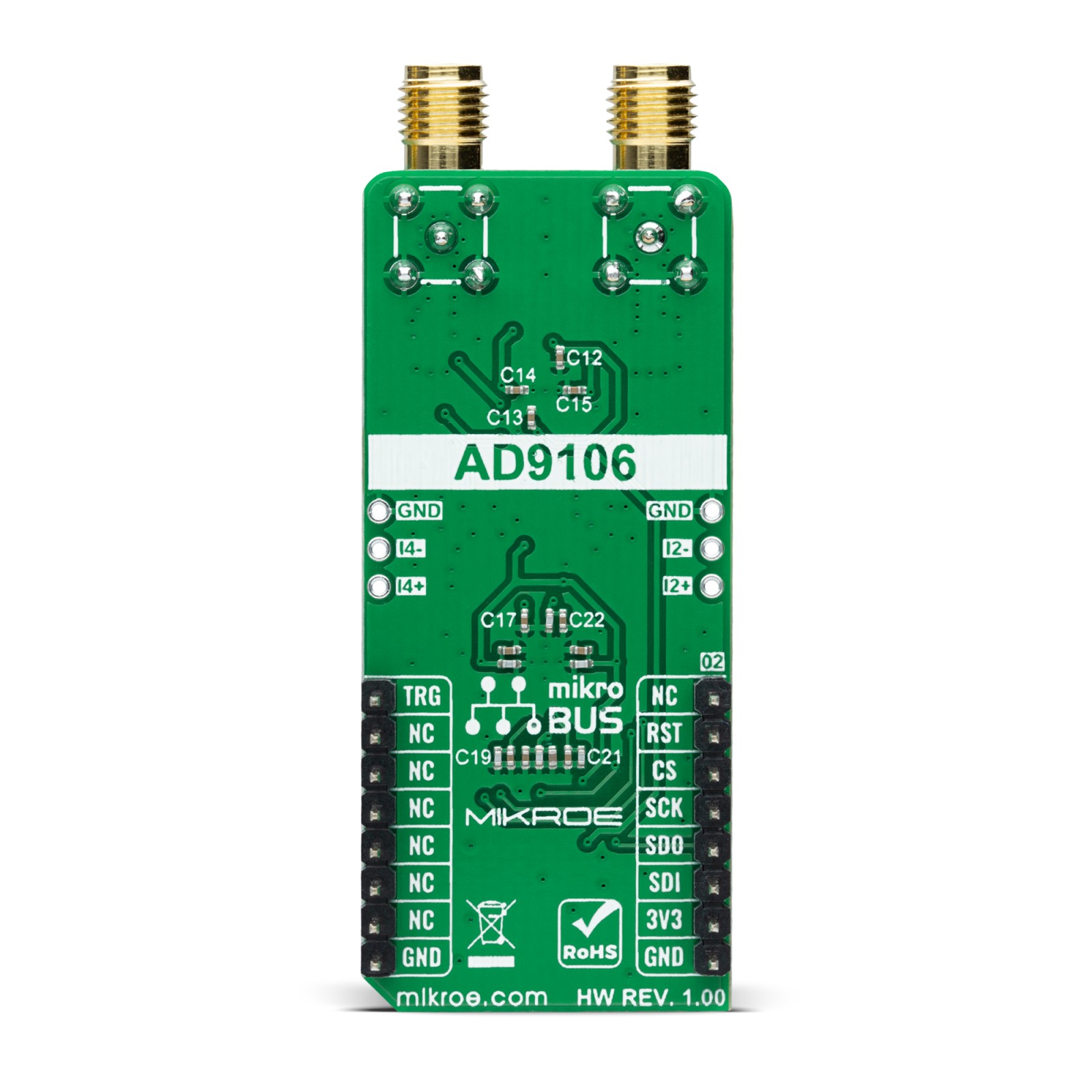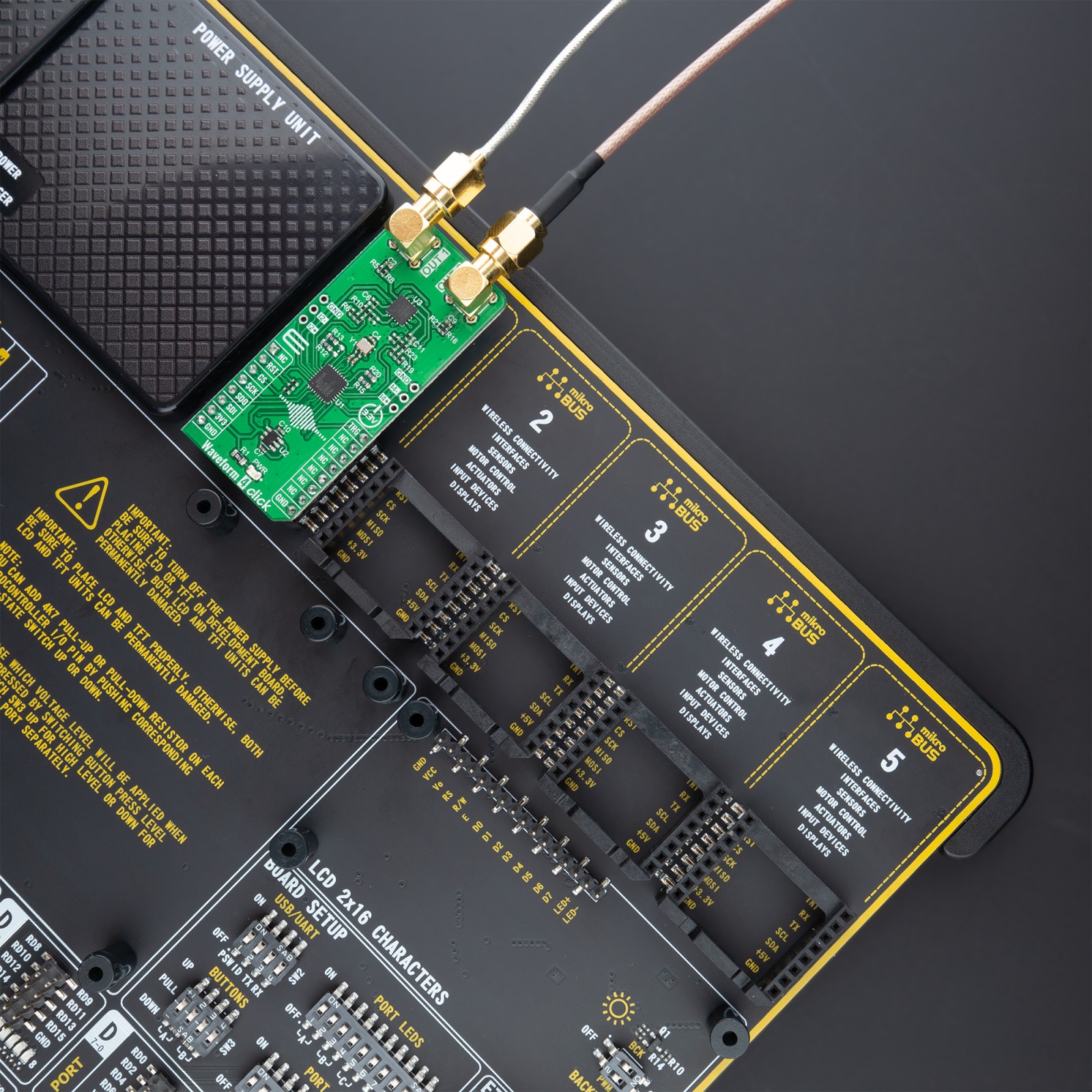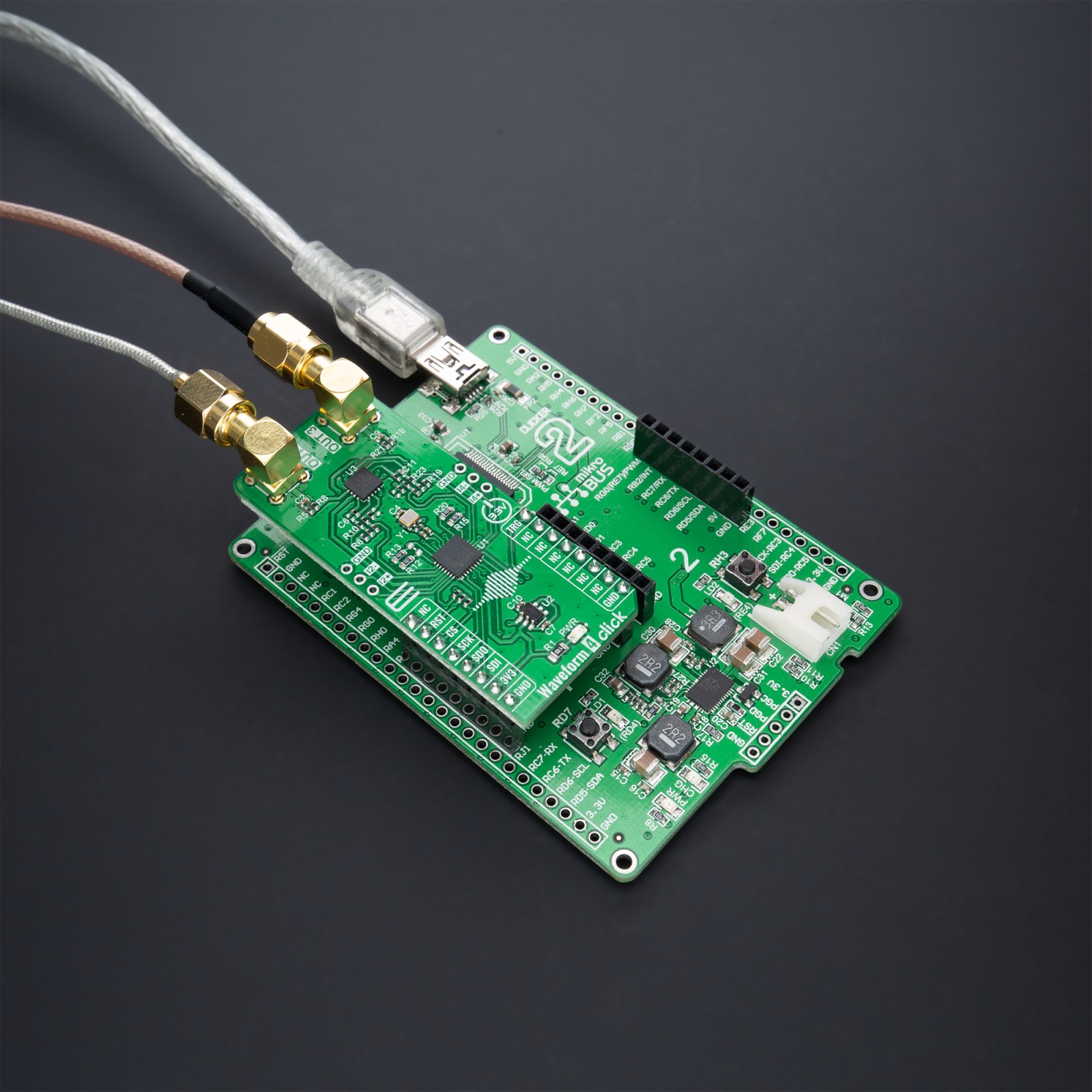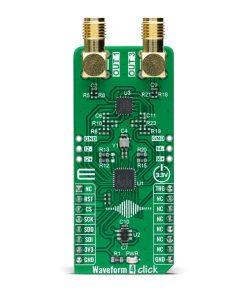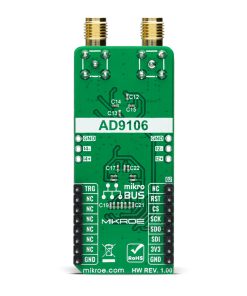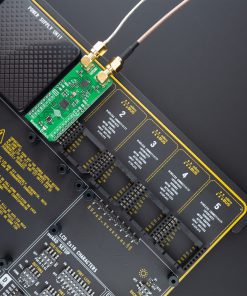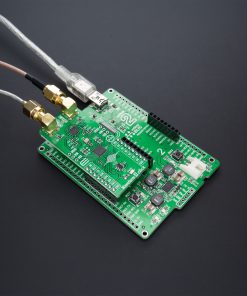Subtotal: R2,160.00
Waveform 4 Click
R2,450.00 ex. VAT
Waveform 4 Click is a compact add-on board that represents a high-performance signal generator. This board features the AD9106, a quad-channel, 12-bit, 180MSPS waveform generator, integrating on-chip static random access memory (SRAM) and direct digital synthesis (DDS) for complex waveform generation from Analog Devices. The DDS is up to a 180 MHz master clock sinewave generator with a 24-bit tuning word allowing 10.8 Hz/LSB frequency resolution. It has a single frequency output and independent programmable phase shift outputs for each of the four integrated DACs. Besides, the integrated SRAM data can include directly generated stored waveforms, accessed using the serial peripheral interface, amplitude modulation patterns applied to DDS outputs, or DDS frequency tuning words. This Click board™ generates the high-speed, high-dynamic-range, multichannel complex waveforms required in applications such as ultrasound transducer excitation, medical instrumentation, portable instrumentation, signal generators, and arbitrary waveform generators.
Waveform 4 Click is supported by a mikroSDK compliant library, which includes functions that simplify software development. This Click board™ comes as a fully tested product, ready to be used on a system equipped with the mikroBUS™ socket.
Stock: Lead-time applicable.
| 5+ | R2,327.50 |
| 10+ | R2,205.00 |
| 15+ | R2,082.50 |
| 20+ | R2,004.10 |

 RN4678 Click
RN4678 Click  EXPAND Click
EXPAND Click  GPS Click
GPS Click 